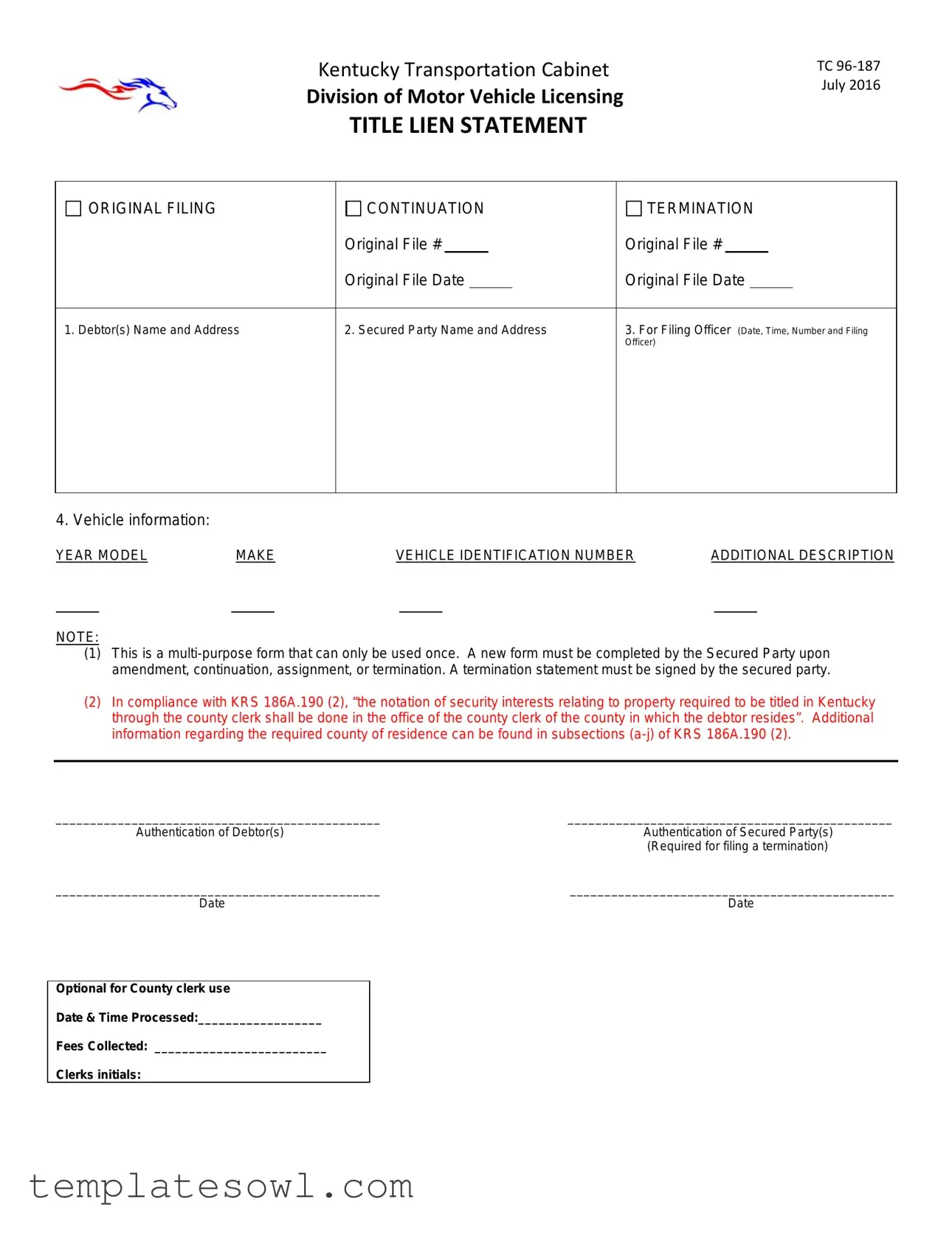What is the Kentucky TC 96 187 form used for?
The Kentucky TC 96 187 form serves as a Title Lien Statement. It is used to record a secured party’s interest in a vehicle's title, ensuring that any loan or financial obligation associated with the vehicle is officially noted. This form is essential for protecting the secured party’s rights and interests in the vehicle until the obligation is satisfied.
Who needs to complete the TC 96 187 form?
The form must be completed by a secured party, typically a lender or financial institution that has offered a loan against the vehicle. The debtor, or vehicle owner, also needs to provide information. Accurate completion by both parties is crucial to ensure that the lien is properly recorded and enforceable.
How long is the TC 96 187 form valid?
The TC 96 187 form is a one-time use document for recording the lien. If there are any changes to the lien situation—such as an amendment, continuation, assignment, or termination—a new form must be filed. Each situation requires independent documentation to maintain compliance with Kentucky regulations.
What should I include in the vehicle information section?
In the vehicle information section, you must provide details such as the year, model, make, vehicle identification number (VIN), and any additional description necessary. Accurate details ensure that the specific vehicle is correctly identified and linked to the lien.
Where should the TC 96 187 form be filed?
The form must be filed with the county clerk in the county where the debtor resides. This is in accordance with KRS 186A.190, which stipulates that security interests relating to vehicles must be noted in the appropriate jurisdiction to be enforceable.
Do both the debtor and secured party need to sign the form?
Yes, both parties' authentication is required on the form. However, only the secured party needs to sign the termination statement if the lien is being terminated. This signature process helps to ensure that both parties agree to the terms and conditions related to the lien.
What happens if the form is not filed correctly?
If the TC 96 187 form is filed incorrectly, the lien may not be recognized, which could jeopardize the secured party’s rights to the vehicle. It is crucial to double-check all information for accuracy and completeness before submission to avoid potential legal and financial complications in the future.

